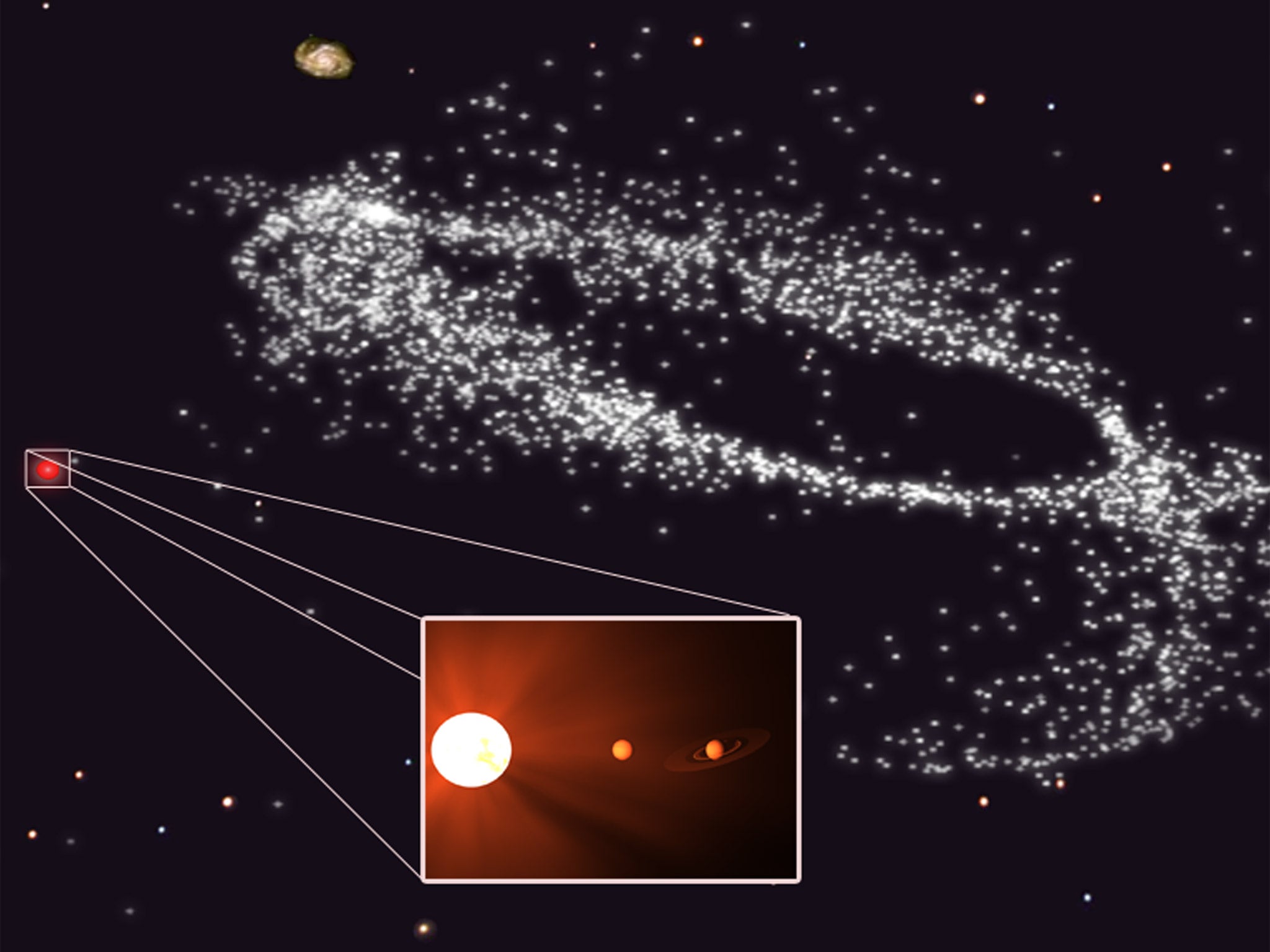Astronomers find oldest potentially earth-like planet

Scientists have found a potentially habitable planet in our galactic back yard. It orbits a star that can be seen with an amateur telescope and its surface may be warm enough for water to exist in liquid form.
The planet is one of two orbiting Kapteyn’s star, which can be seen in the southern constellation of Pictor, and astronomers believe it could be more than twice the age of Earth, making it one of the oldest known habitable planets.
Astronomers made the discovery by measuring the changes in the wavelengths of the light coming from the star as it “wobbled” back and forth under the influence of the gravitational attraction of its two satellites.
An analysis of the data showed that the second planet, called Kapteyn b, is at least five times as massive as the Earth and that it orbits the star every 48 days – a relatively fast “periodicity” compared to the Earth’s orbital period around the Sun of 365 days.
“We were surprised to find planets orbiting Kapteyn’s star. Previous data showed some moderate excess of variability, so we were looking for very short-period planets when the new signals showed up loud and clear,” said Guillem Anglada-Escude of Queen Mary, University of London.
“The planet has the right mass to be a rocky planet and all the other properties are compatible with it having water on its surface. The star is so old that if life evolved on the planet it had plenty of time to evolve, and maybe to go extinct,” Dr Anglada-Escude said.
Kapteyn b’s orbit suggests that it exists in the “Goldilocks zone” where it is neither too hot nor too cold of liquid water, which is considered an essential prerequisite for life. The second planet, Kapteyn c, however is a much larger planet with an orbit of 121 days, suggesting that it is too cold for water and life.
Kapteyn’s star was discovered in the 19th Century by the Dutch astronomer Jacobus Kapteyn and belongs to an extended cloud of stars orbiting the Milky Way galaxy known as the galactic halo. Astronomers believe the star was born in much older dwarf galaxy that was later subsumed into the Milky Way.
This means that the star and its planet is likely to be very old, perhaps as old as 11.5 billion years, which is two and a half times as old as the Earth and only 2twobillion years younger than the Universe itself, the researchers said.
“It does make you wonder what kind of life could have evolved on those planets over such a long time,” Dr Anglada-Escude said.
The study, published in the journal Monthly Notices of the Royal Astronomical Society, was made with the help of powerful telescopes in Chile which could detect the faintest changes in the wavelength of star light – likened to being able to spot a moth flying around a distant lighthouse.
Subscribe to Independent Premium to bookmark this article
Want to bookmark your favourite articles and stories to read or reference later? Start your Independent Premium subscription today.

Join our commenting forum
Join thought-provoking conversations, follow other Independent readers and see their replies